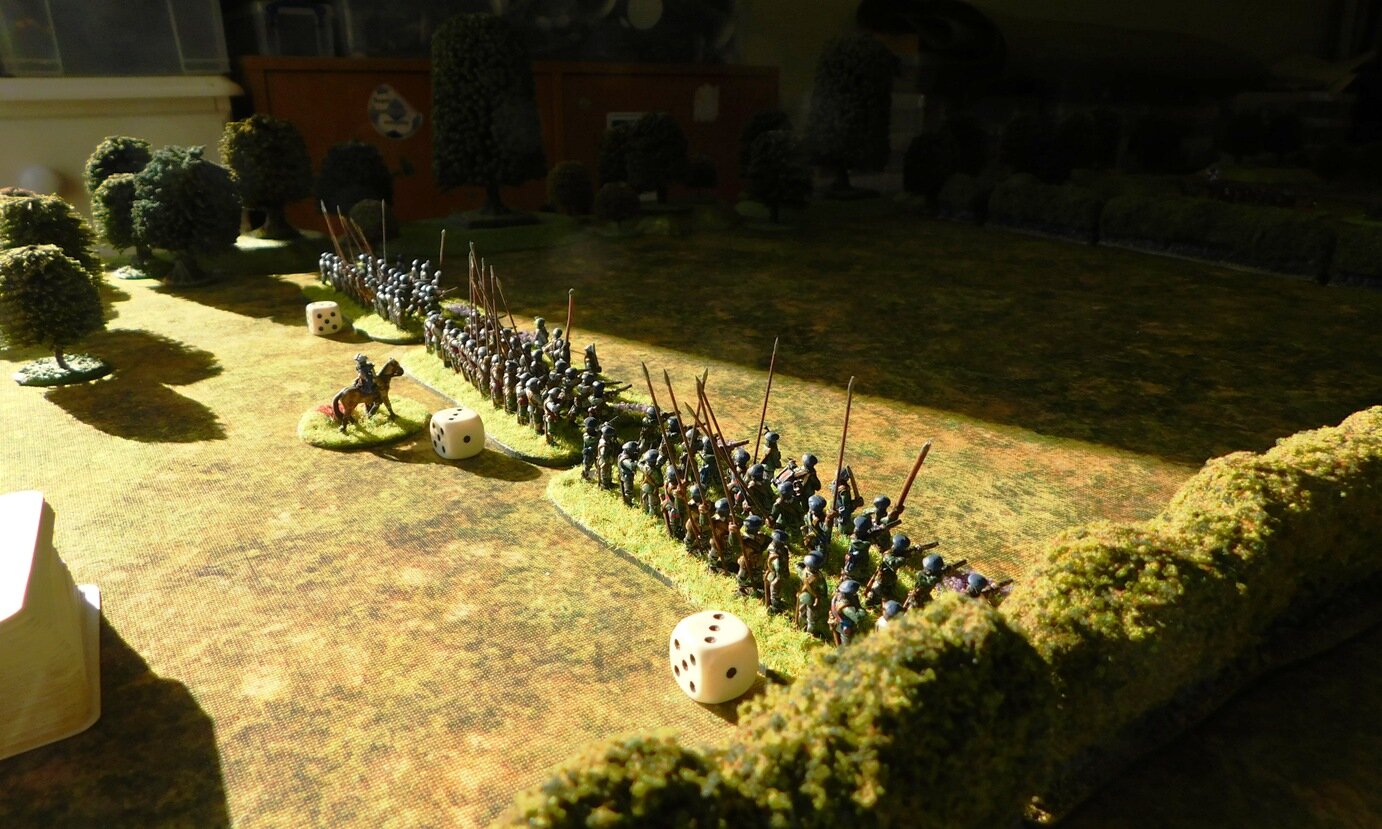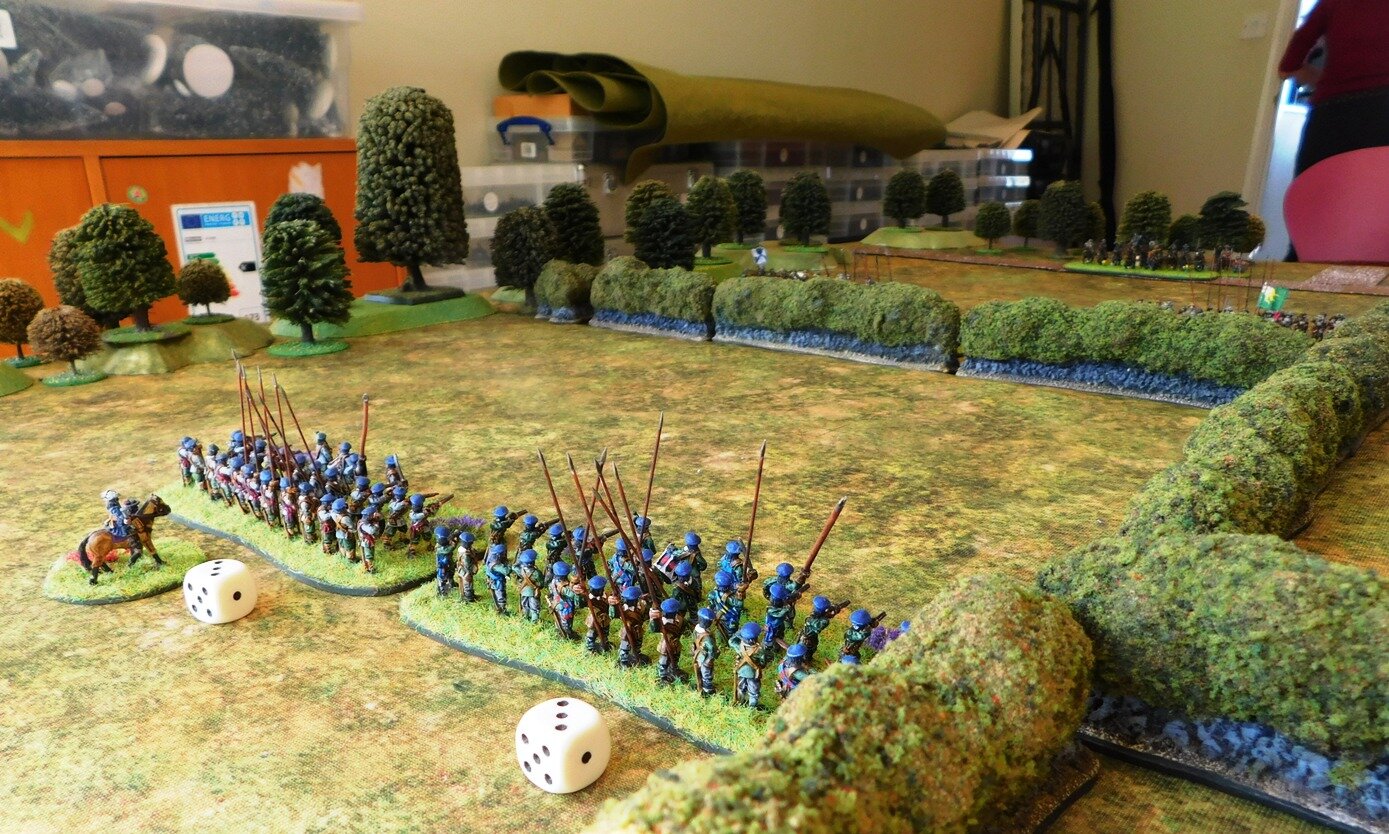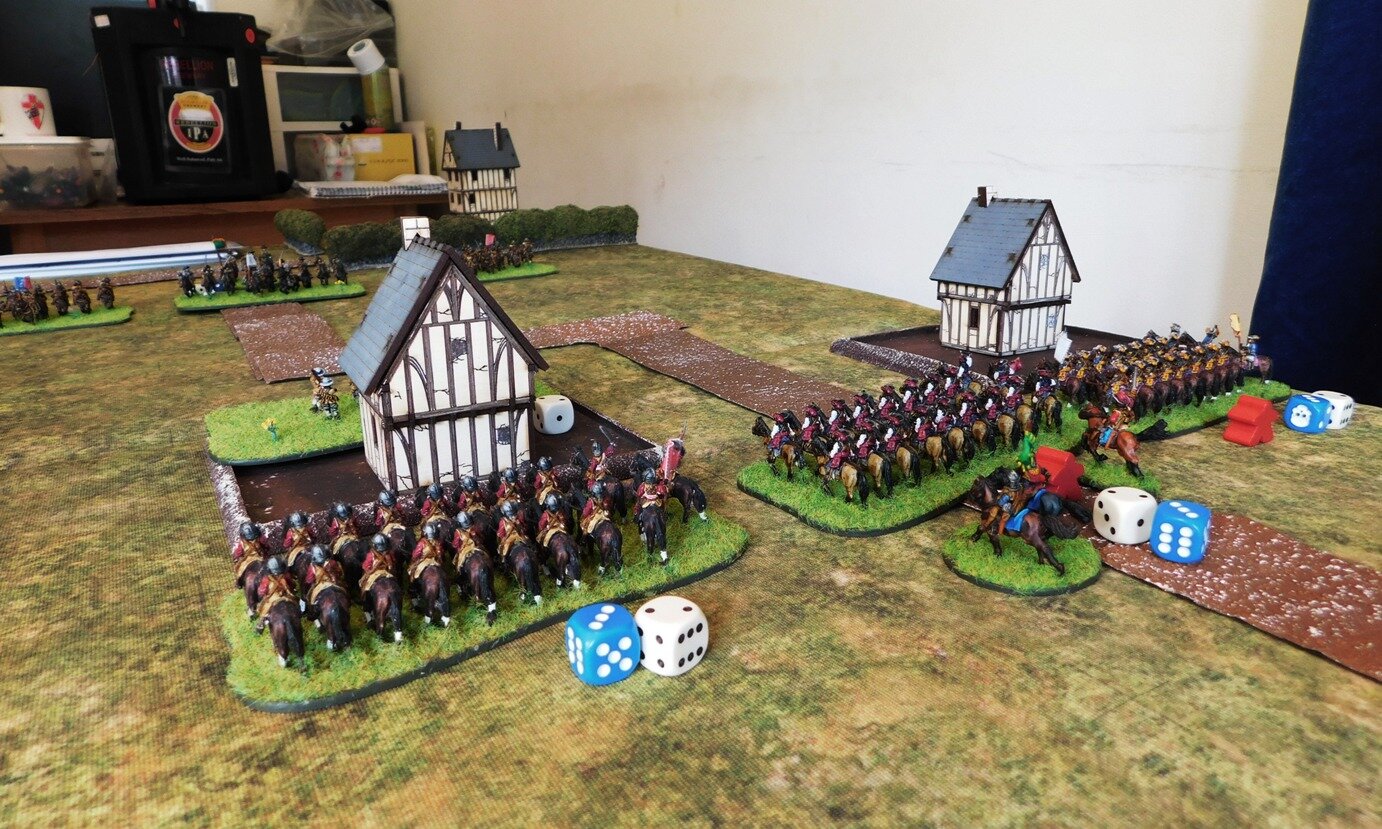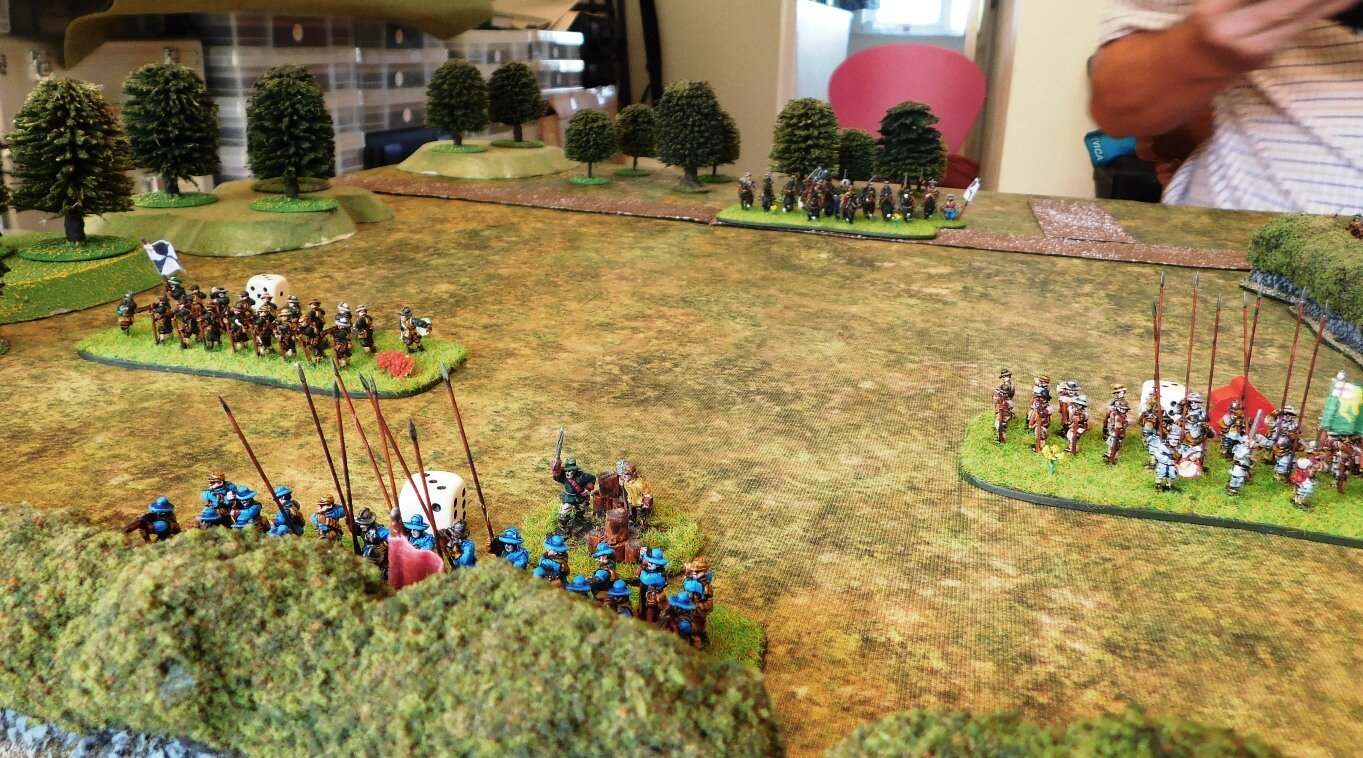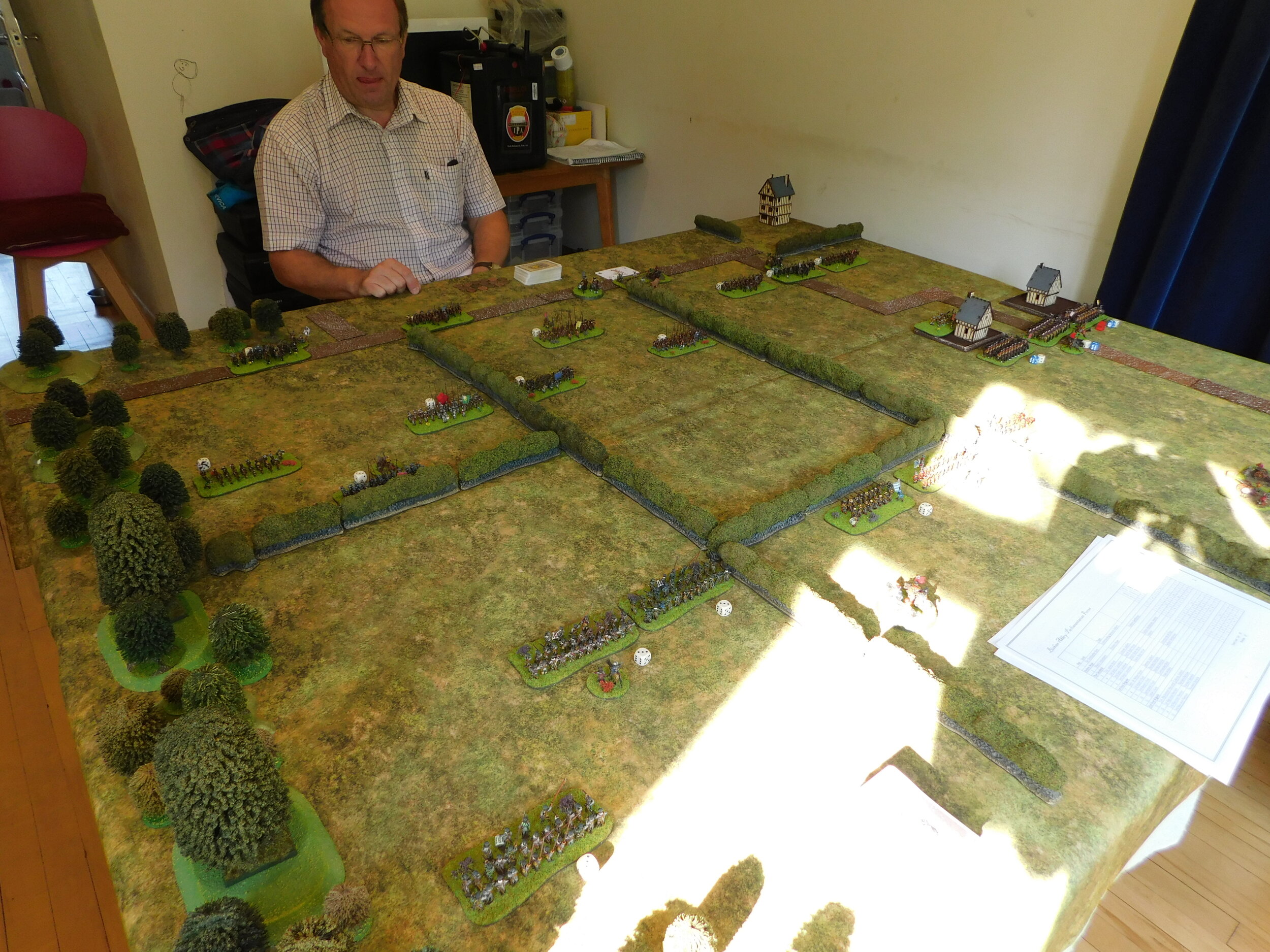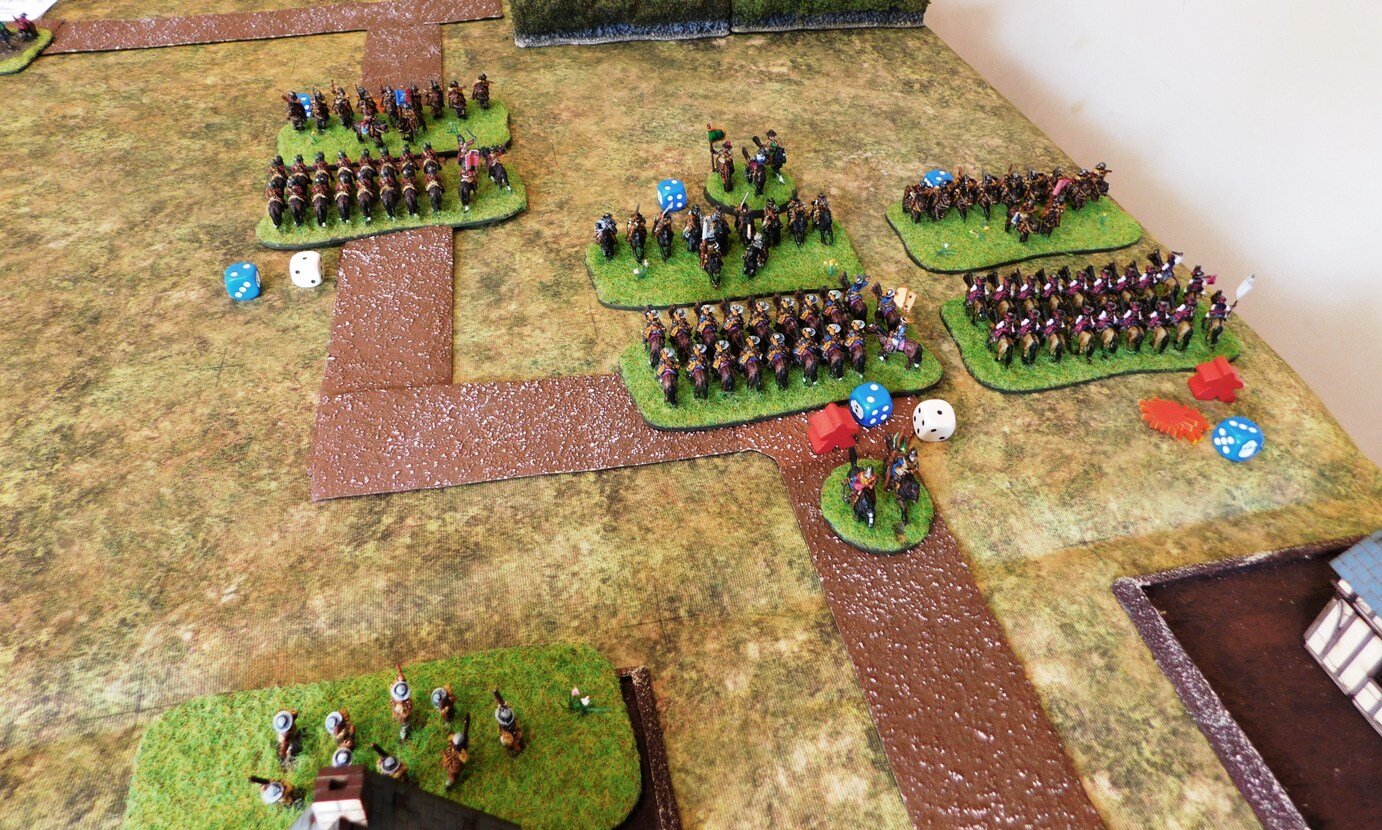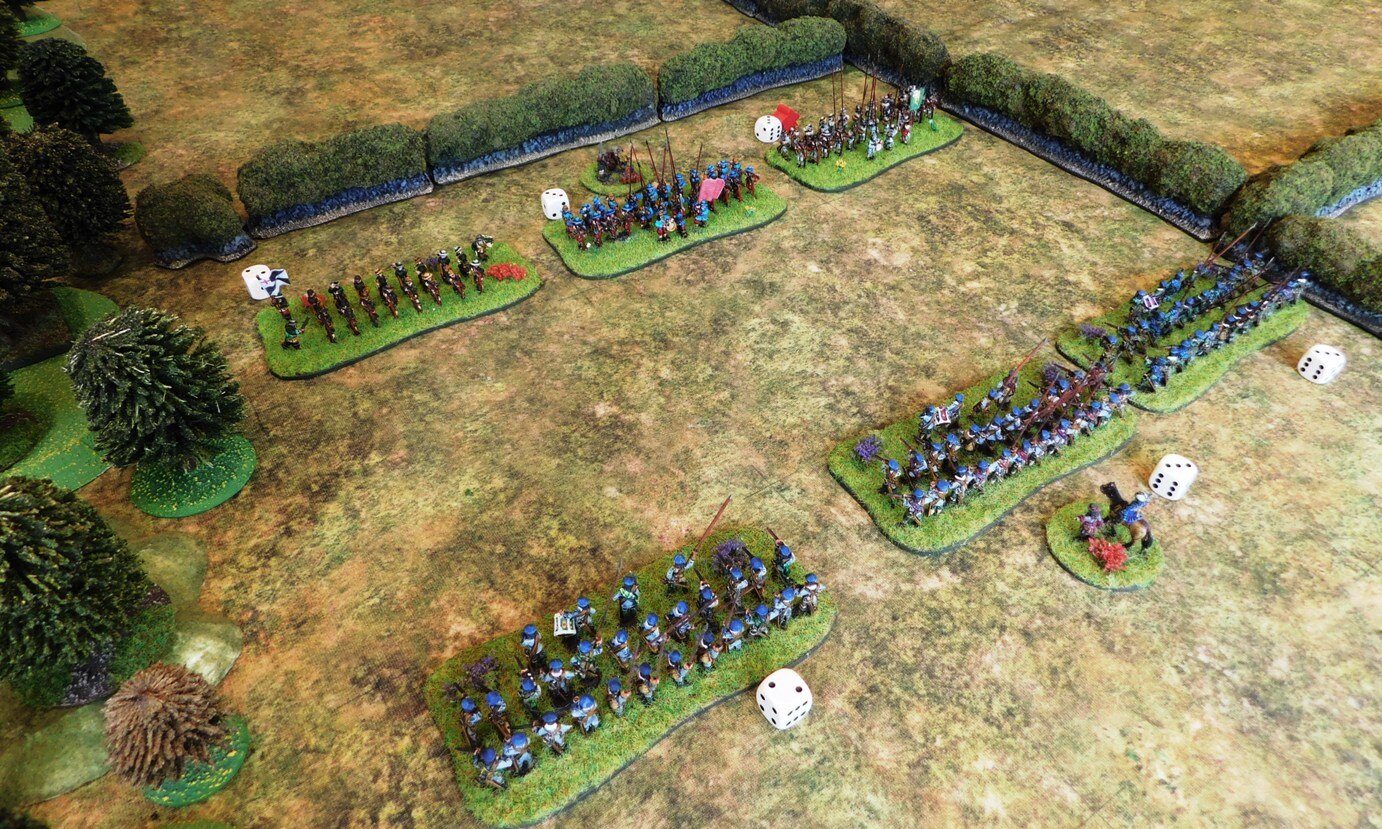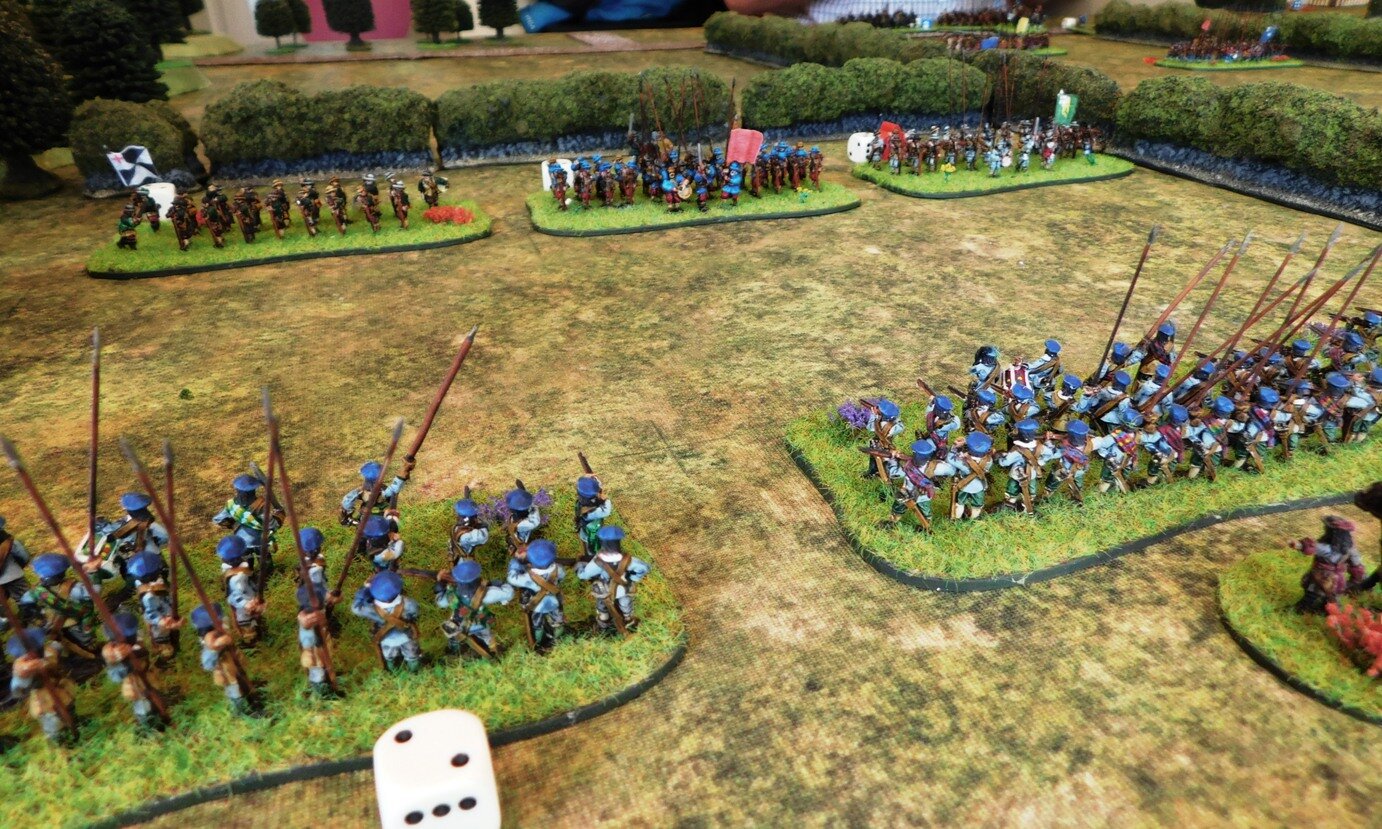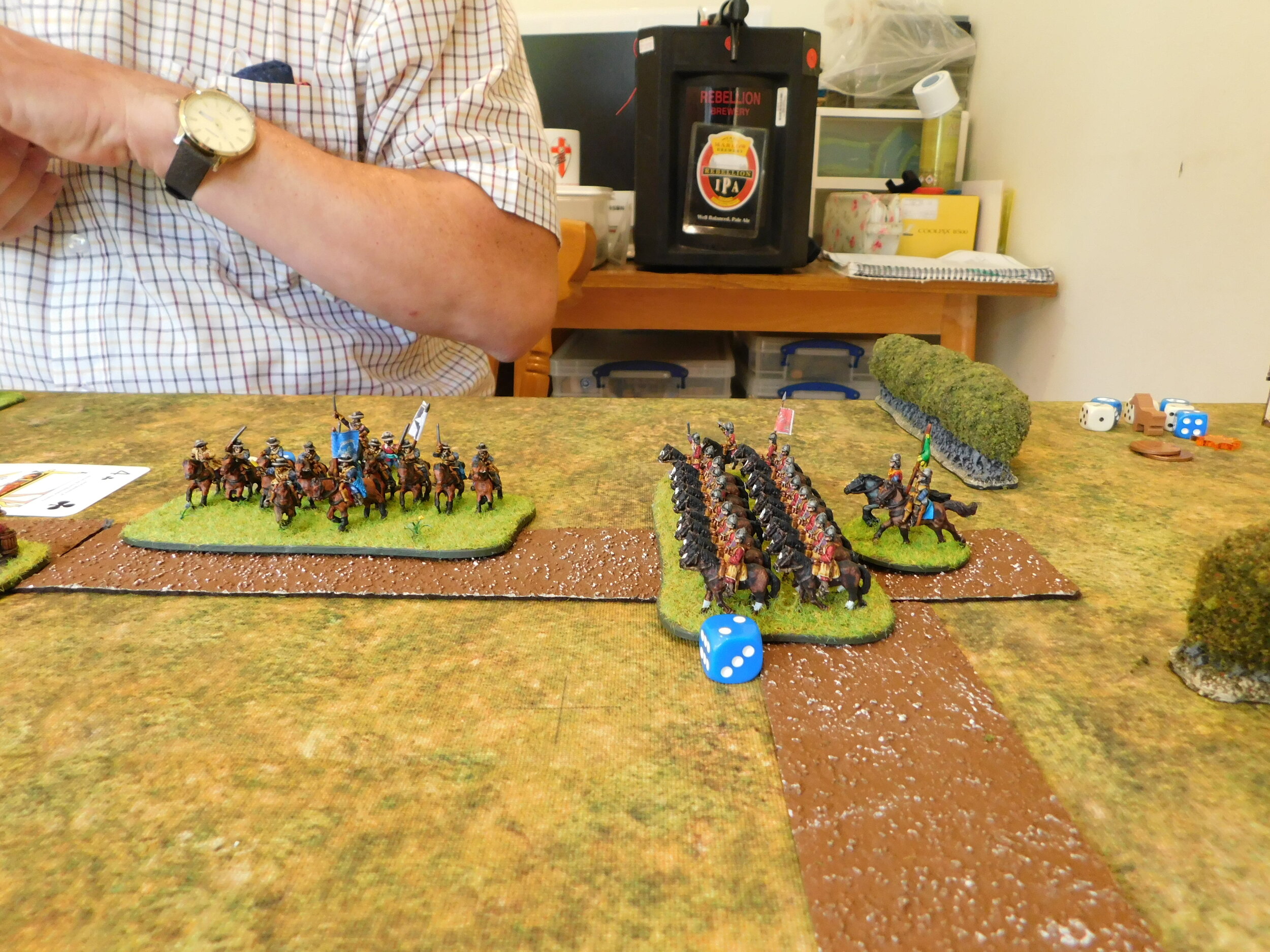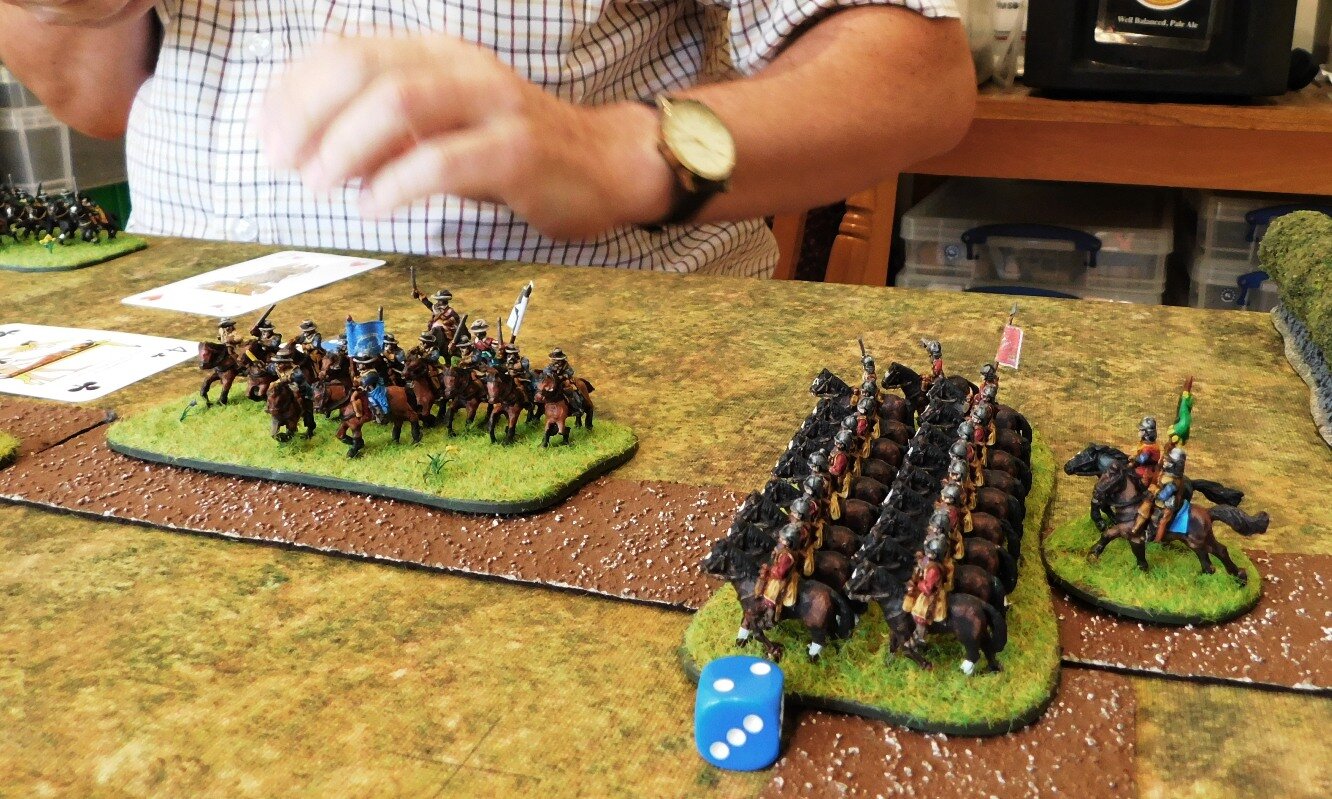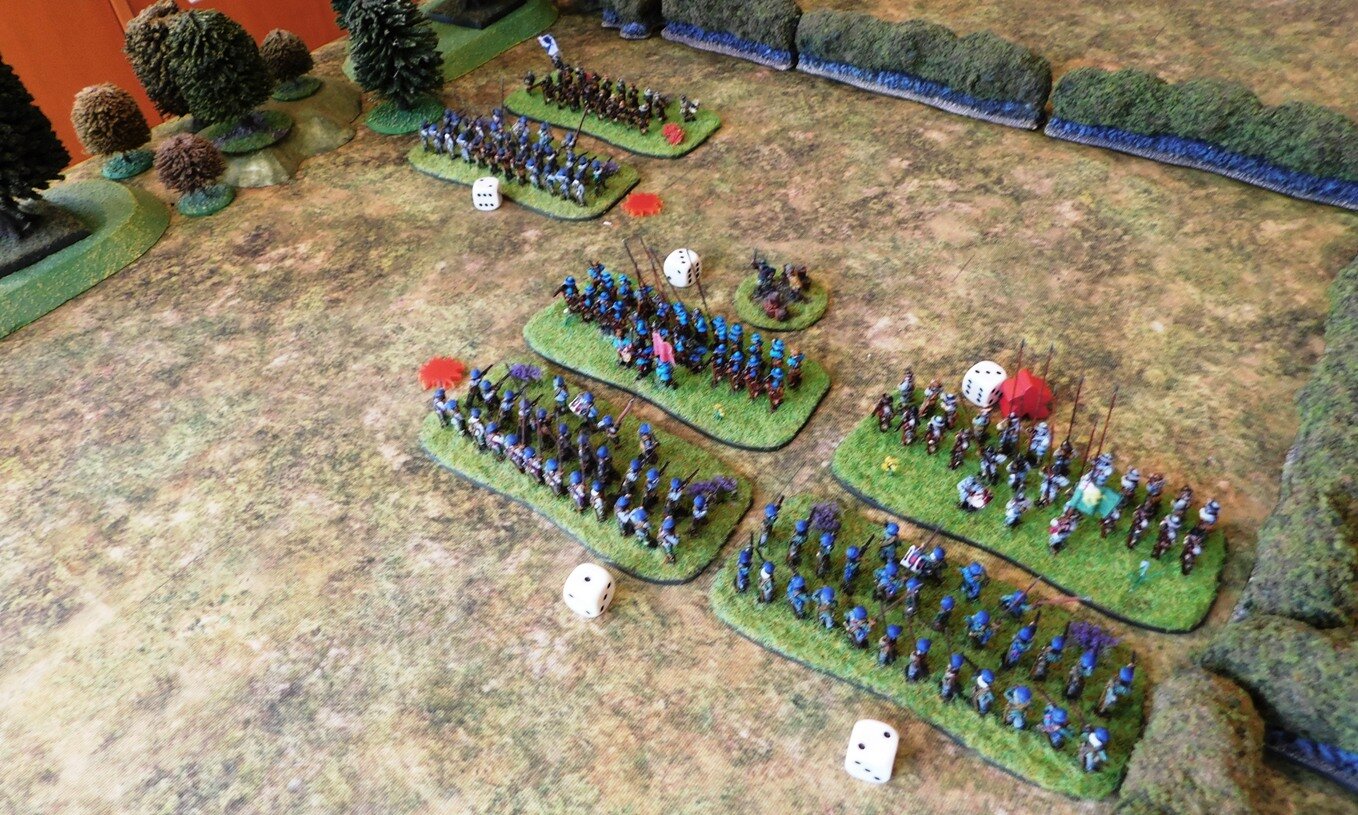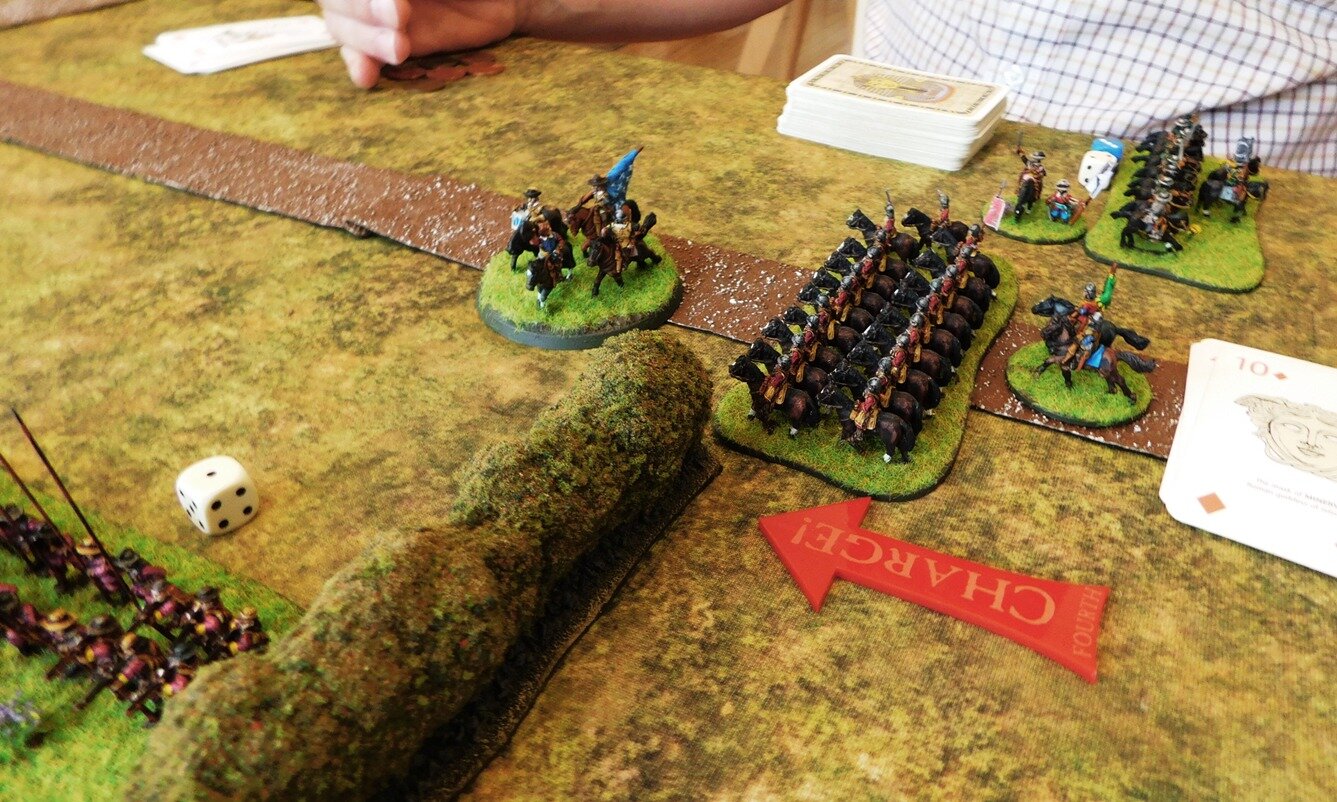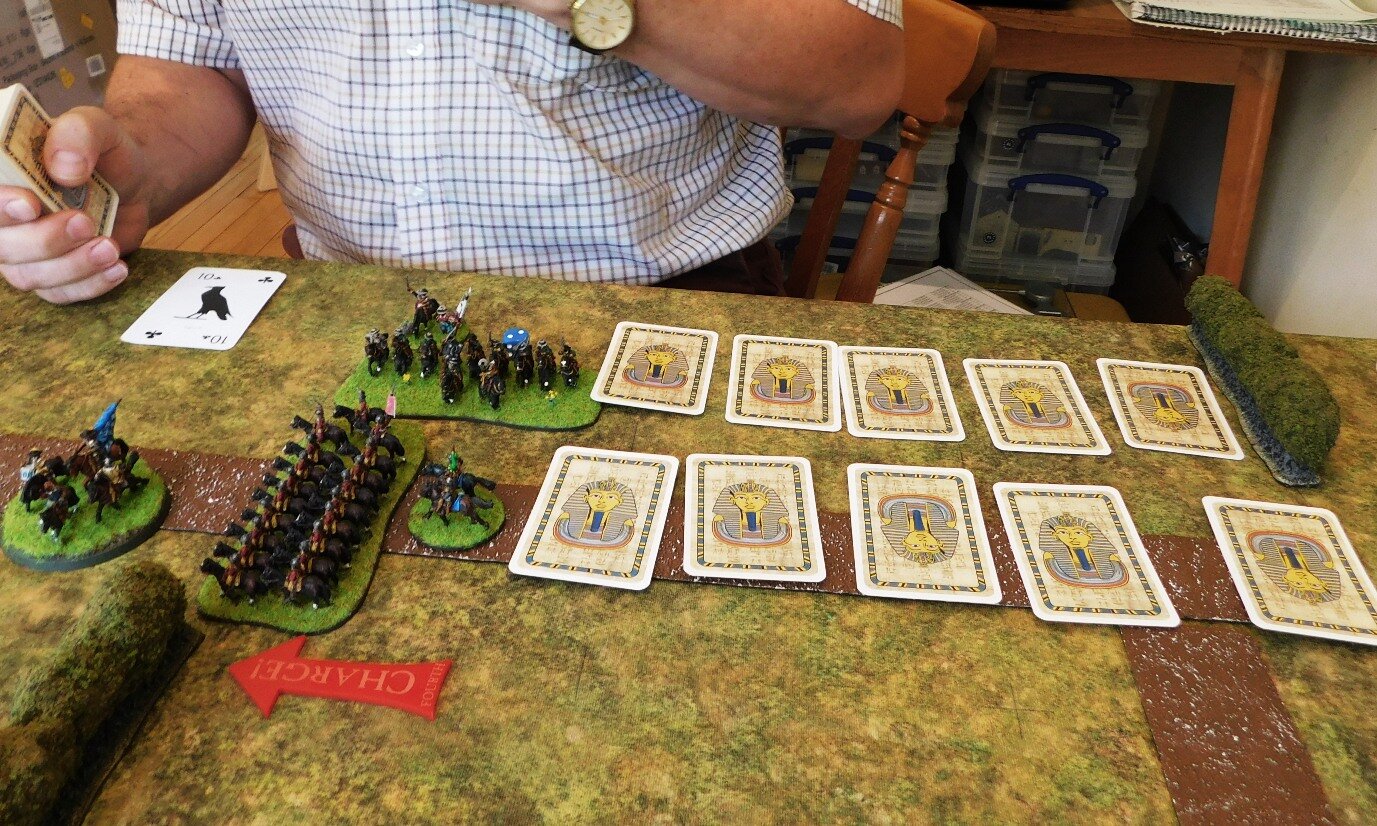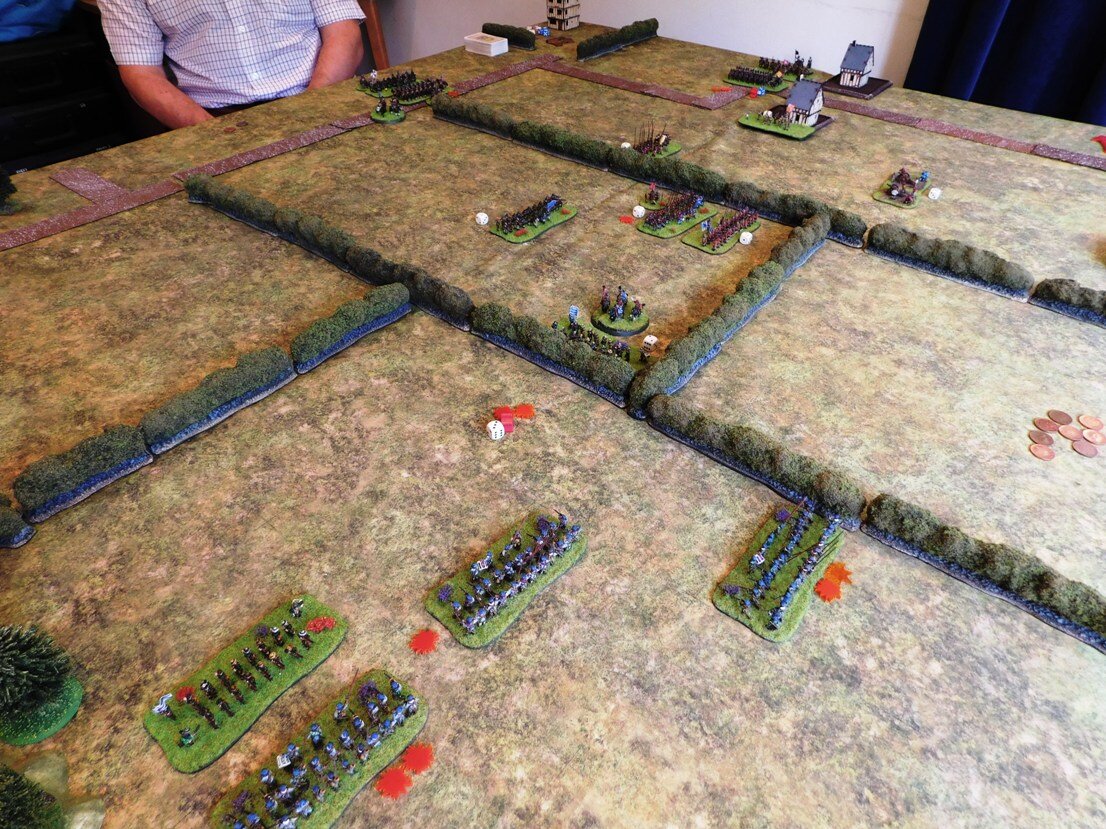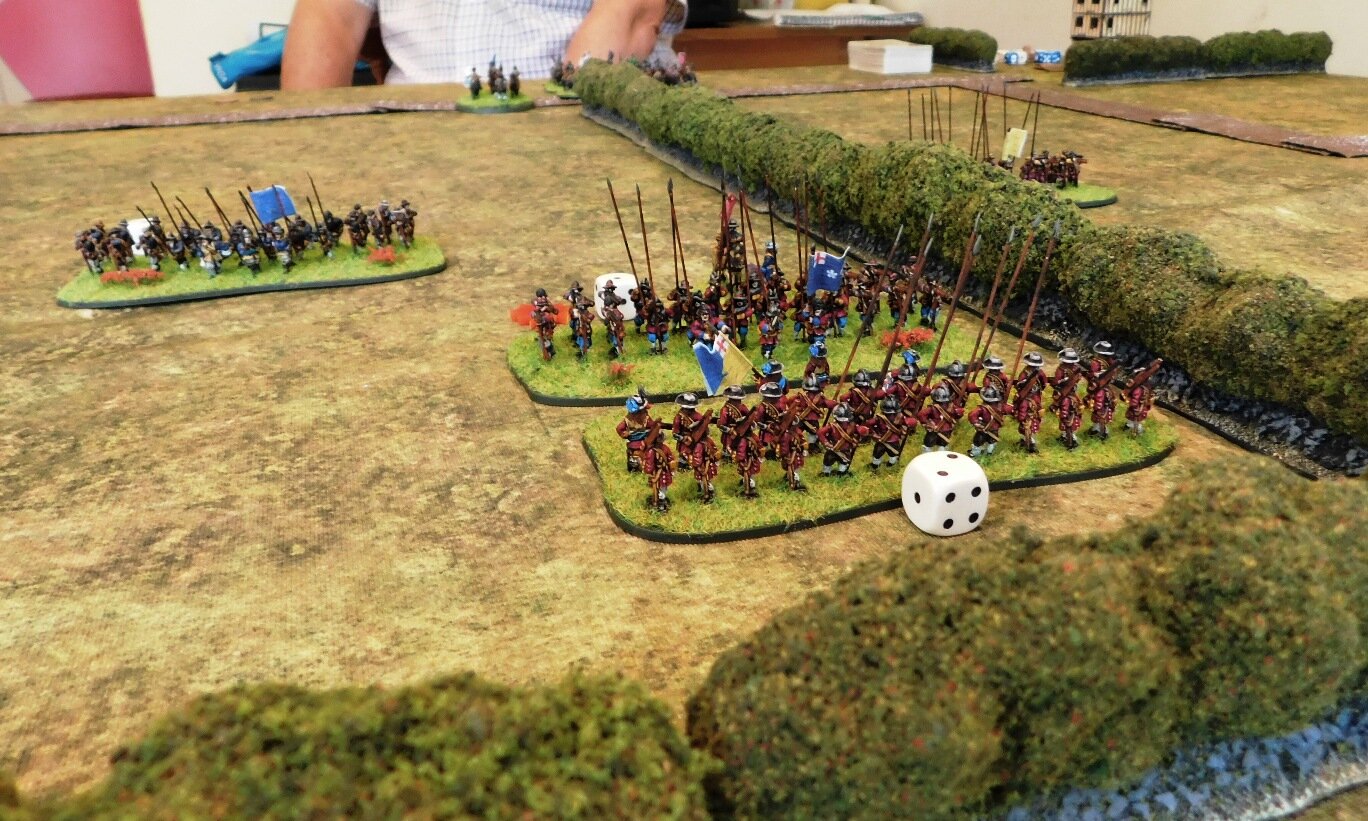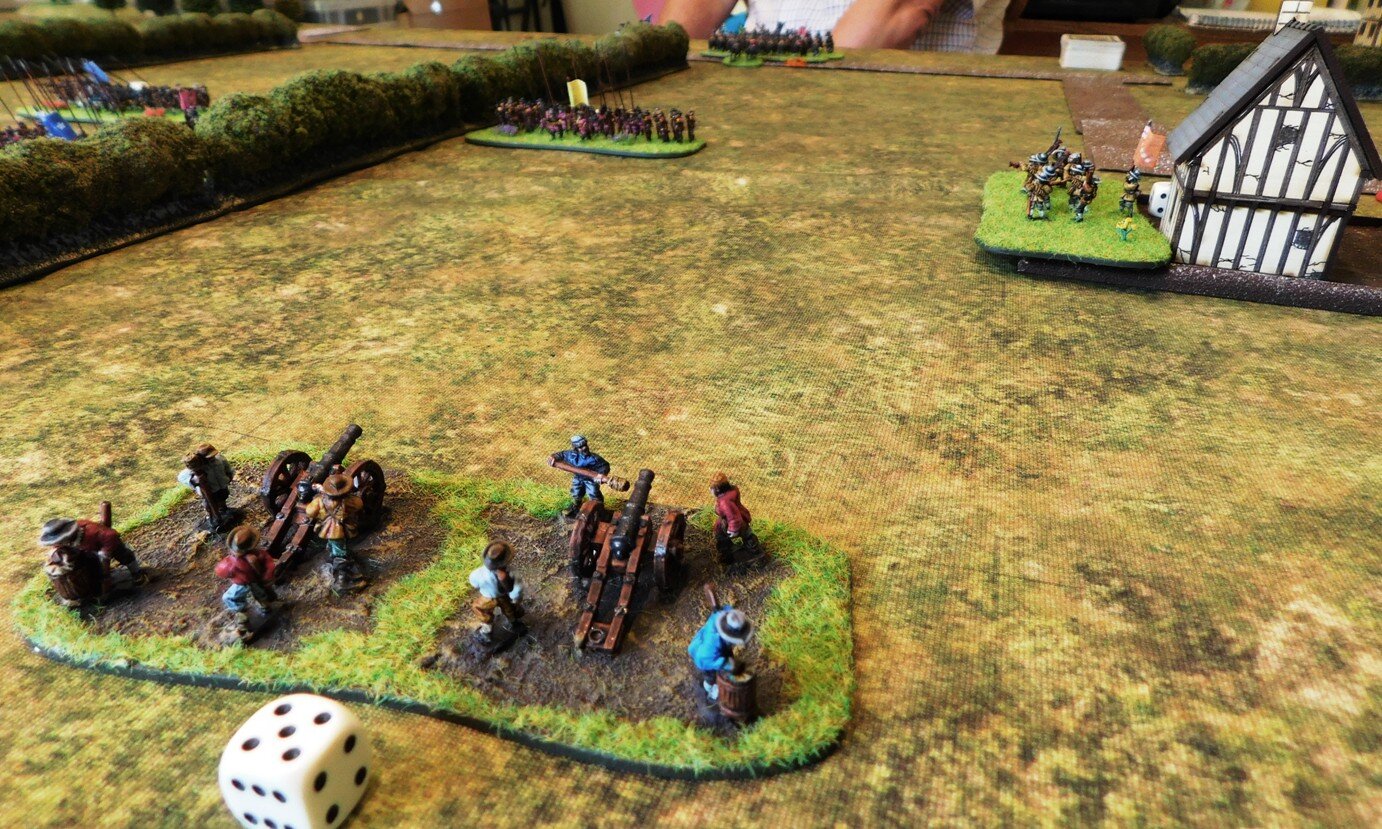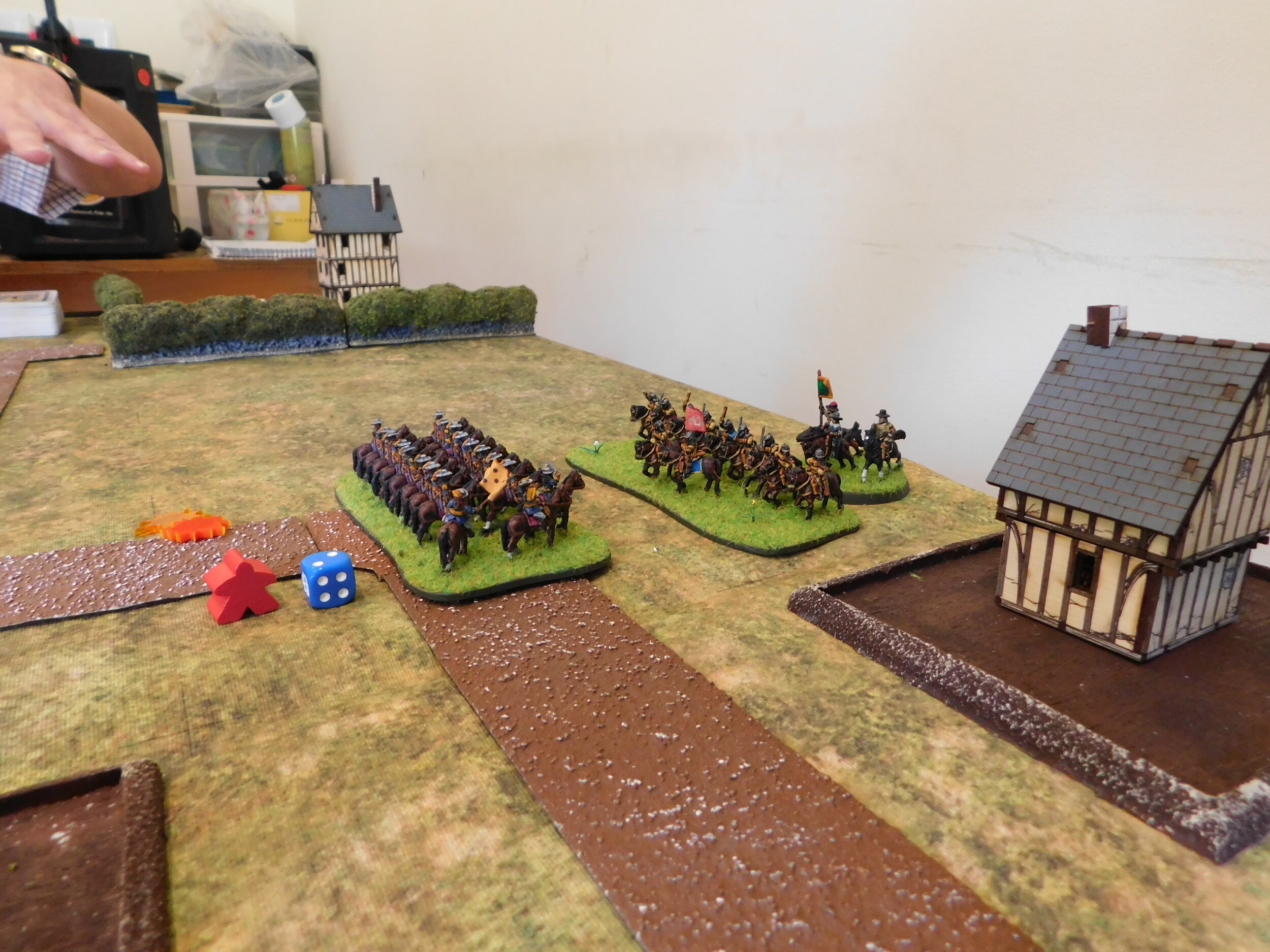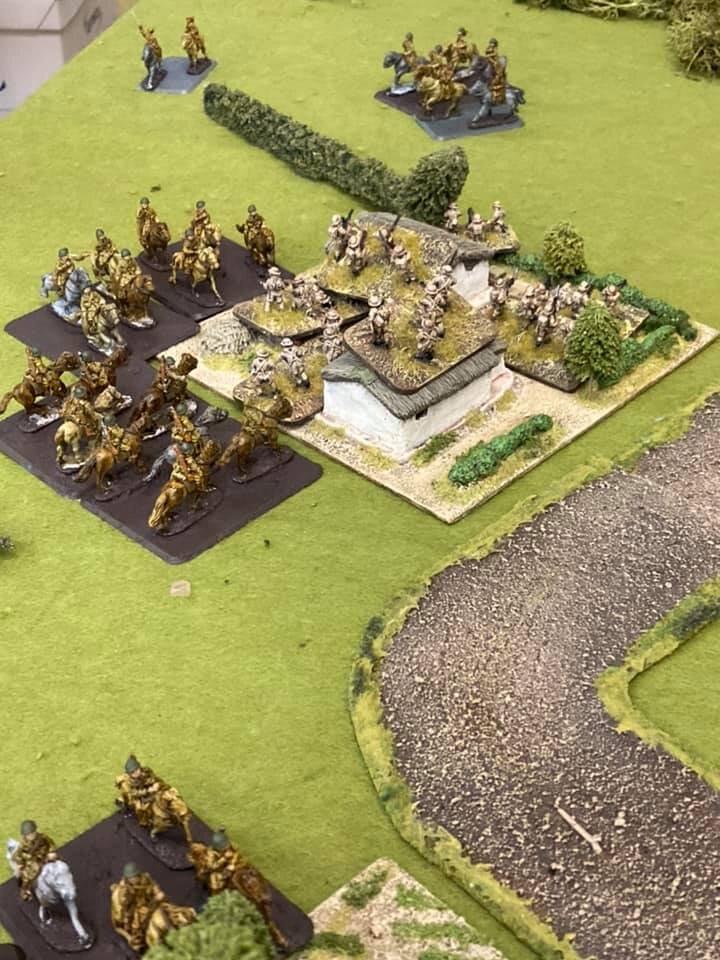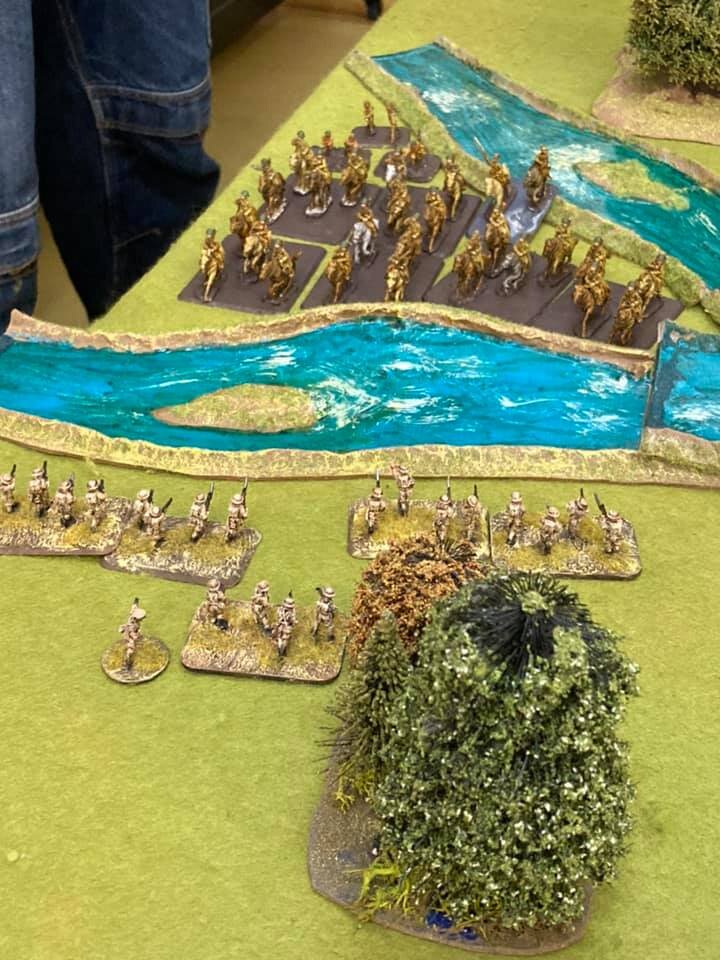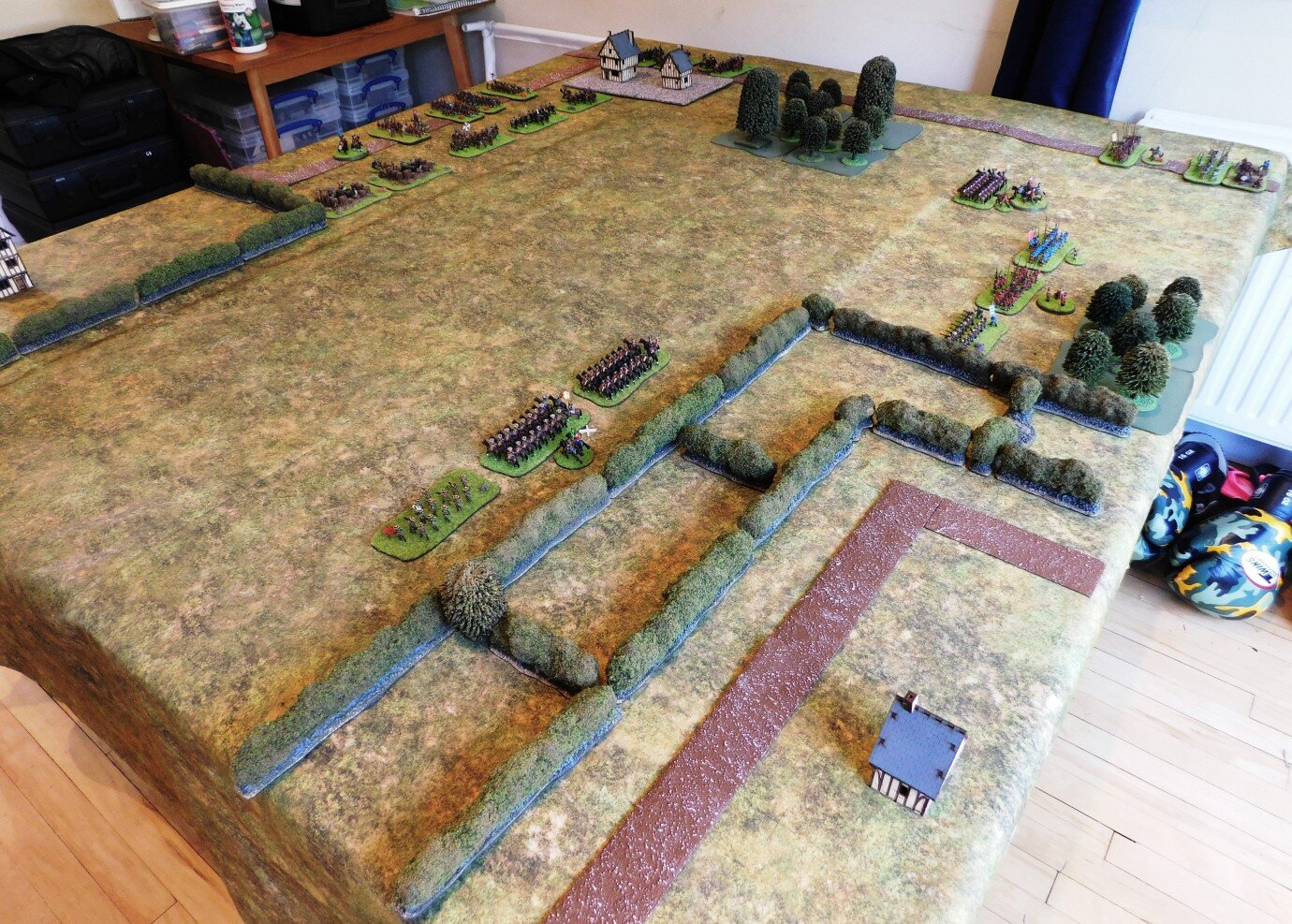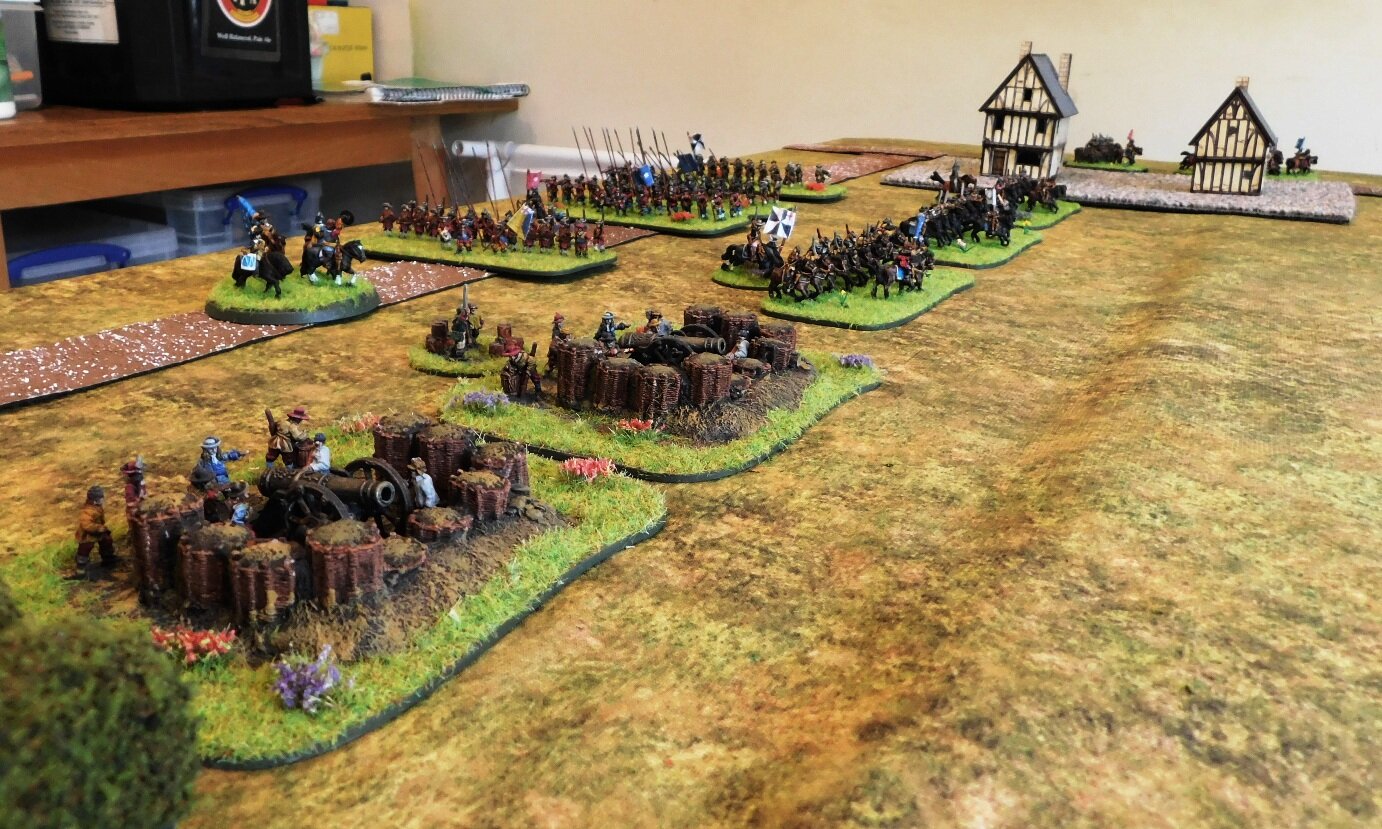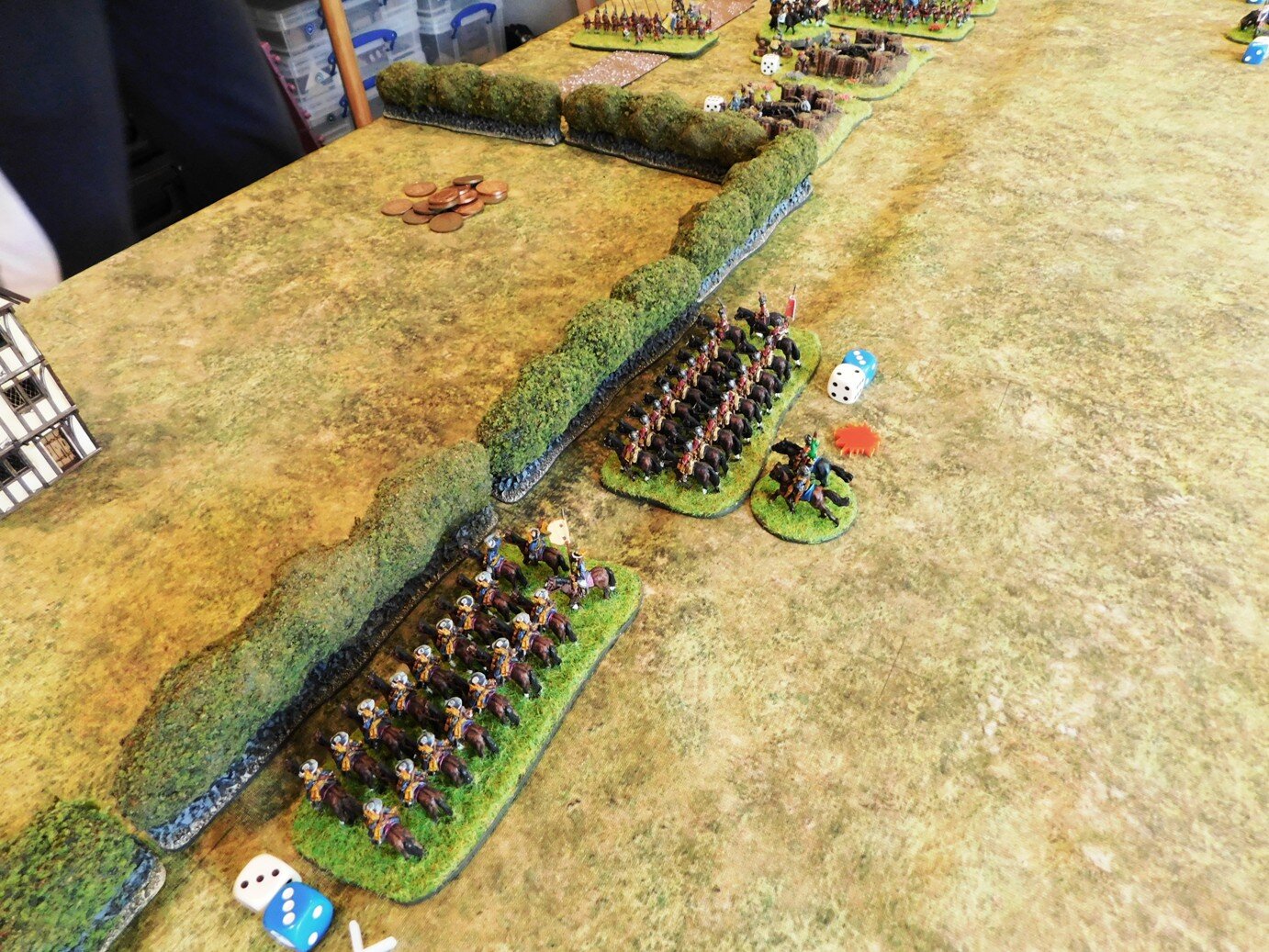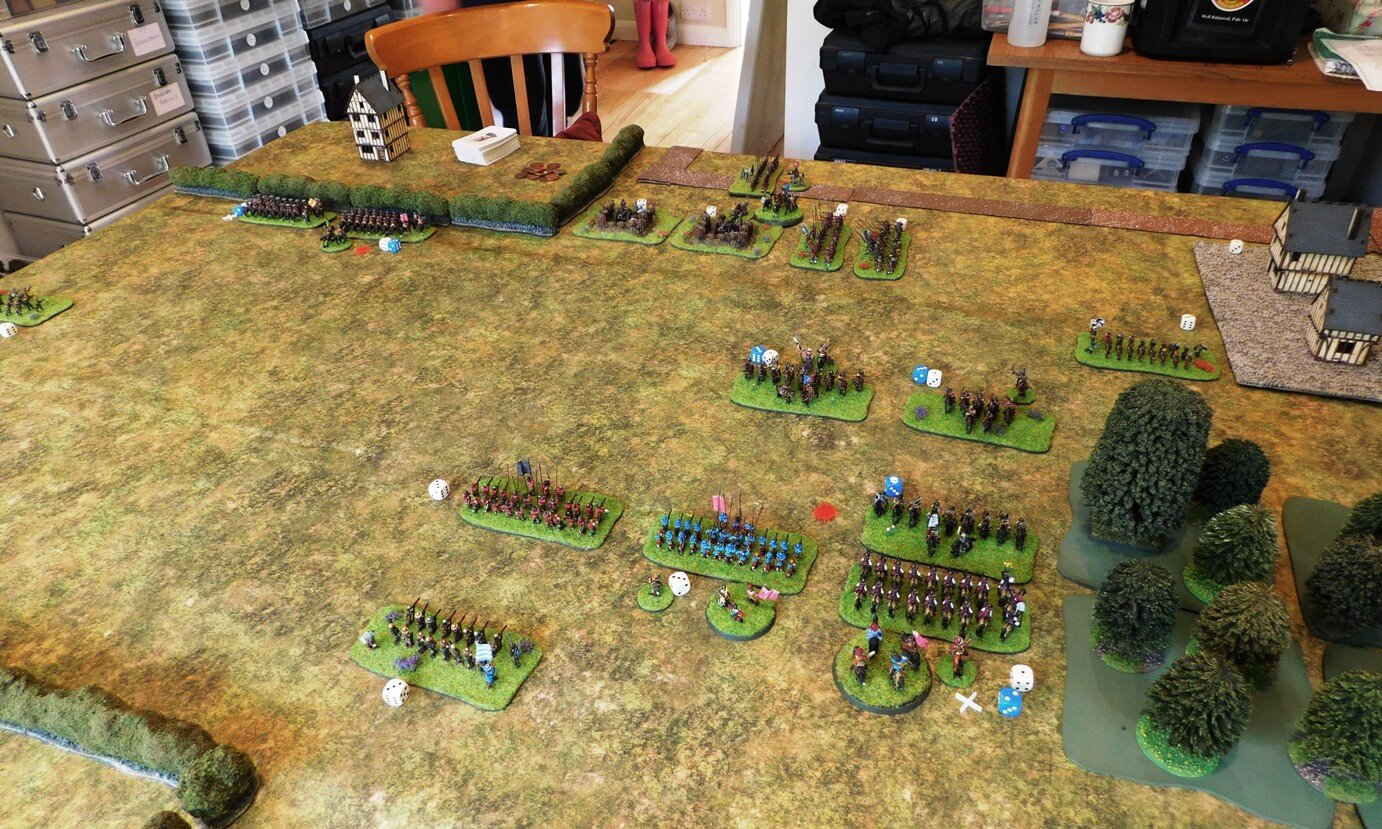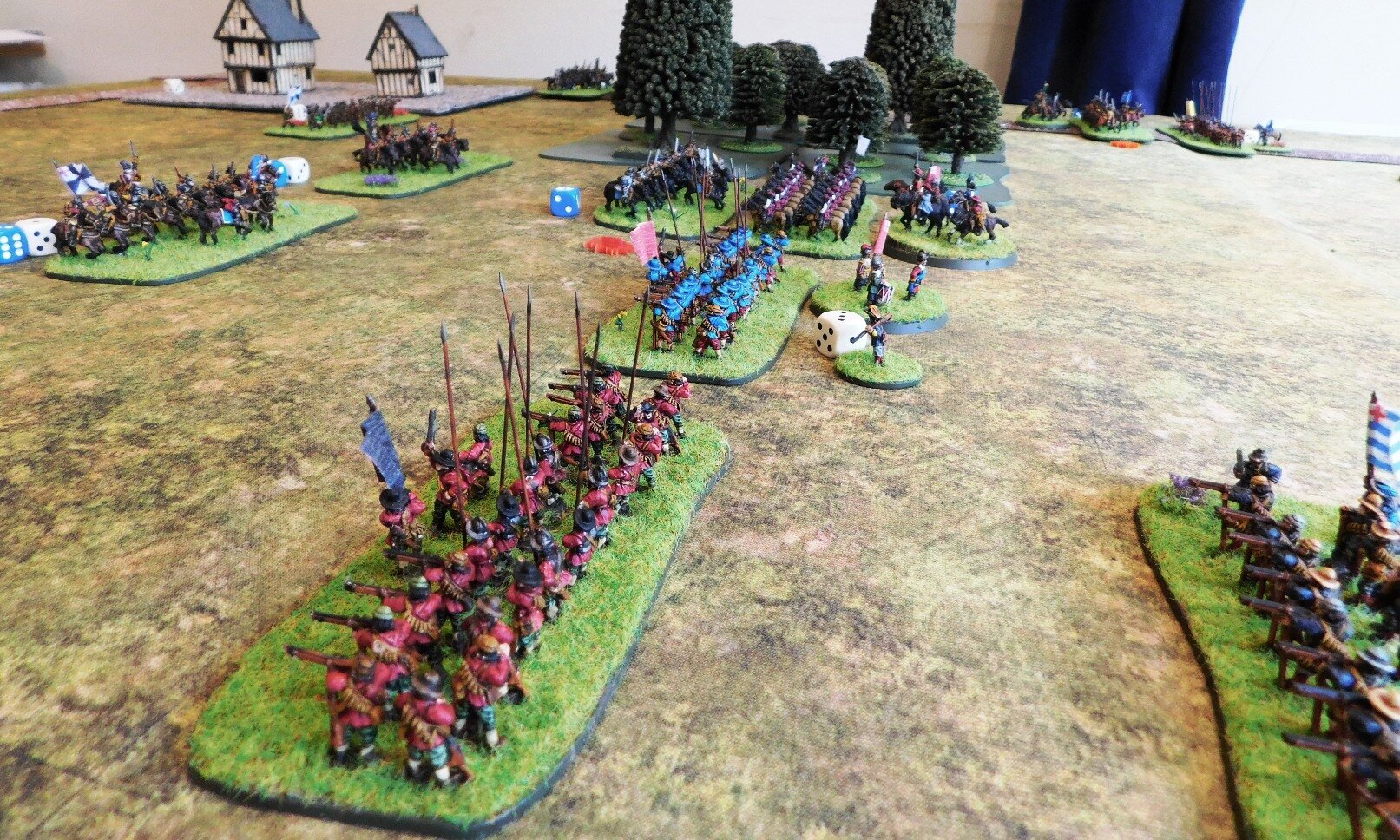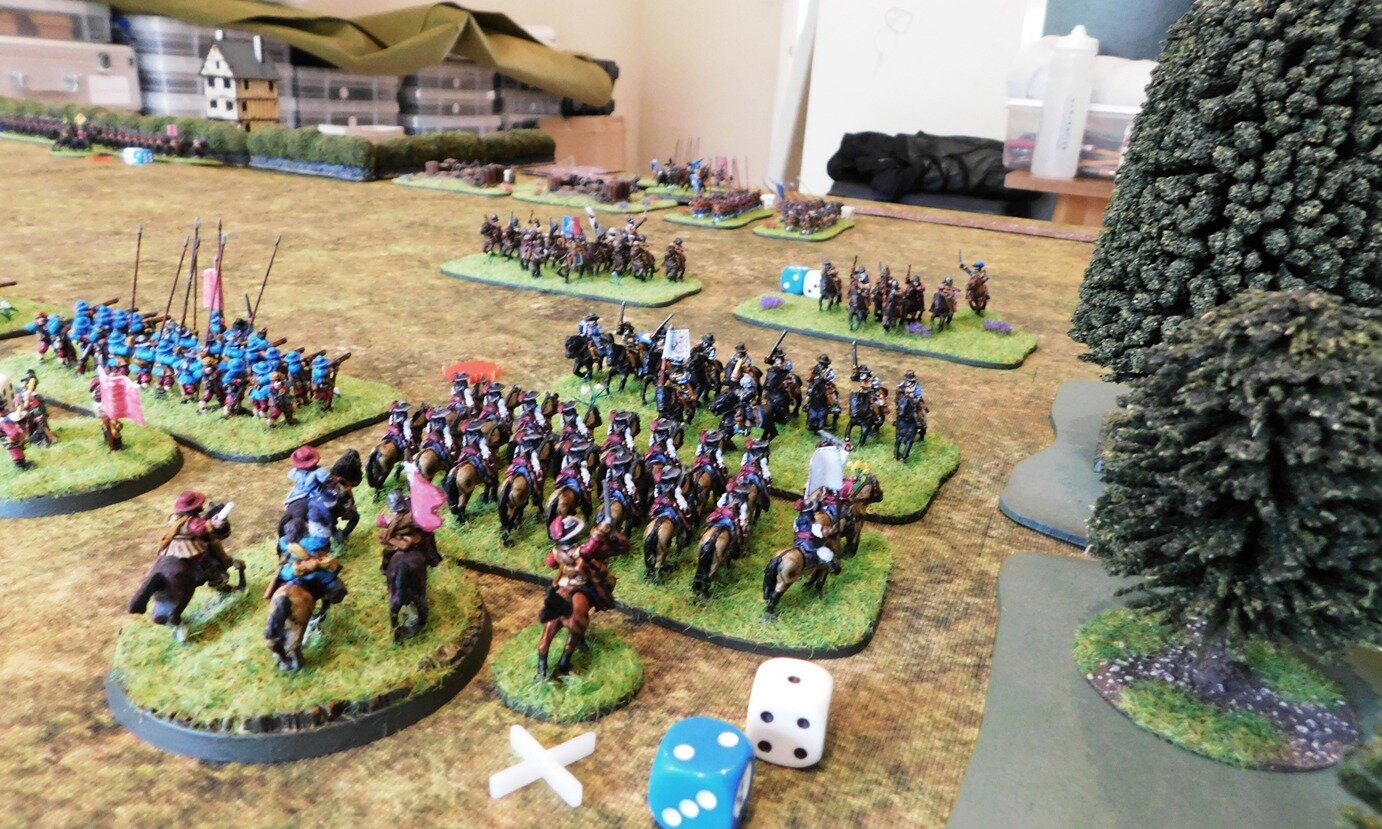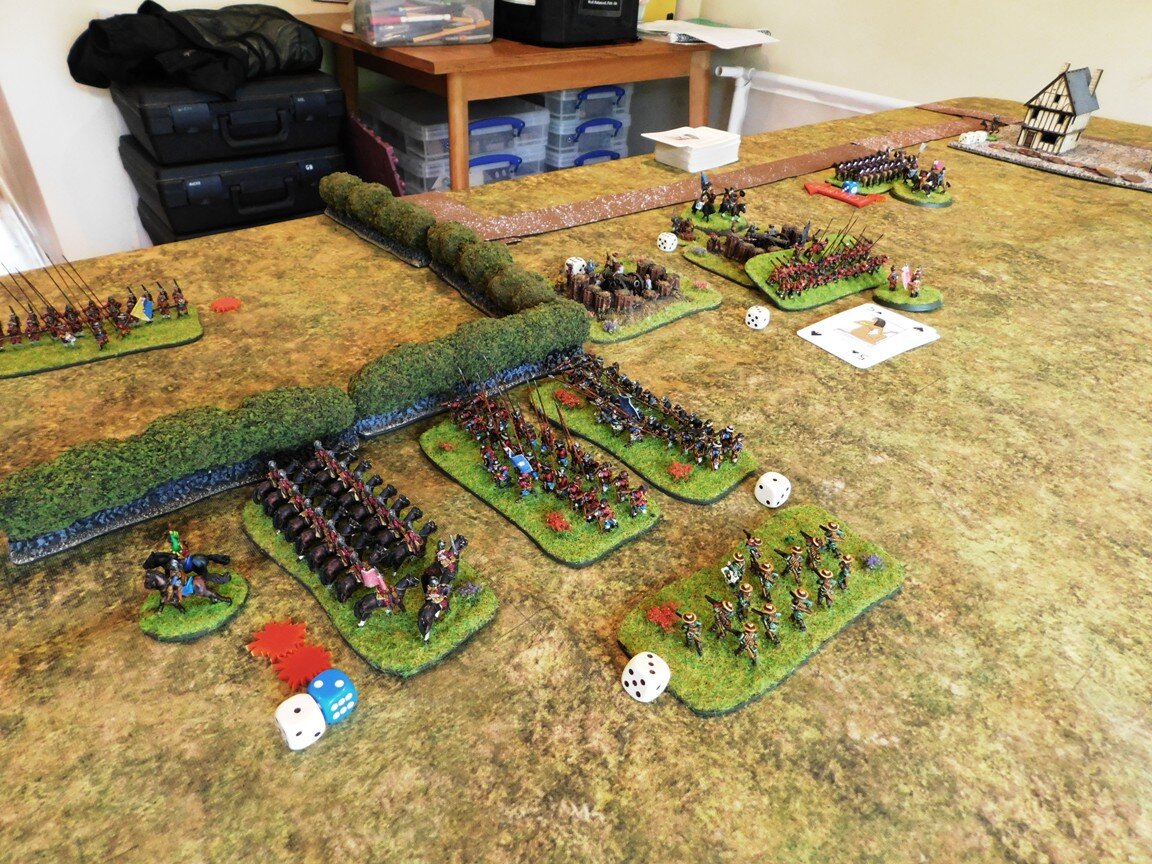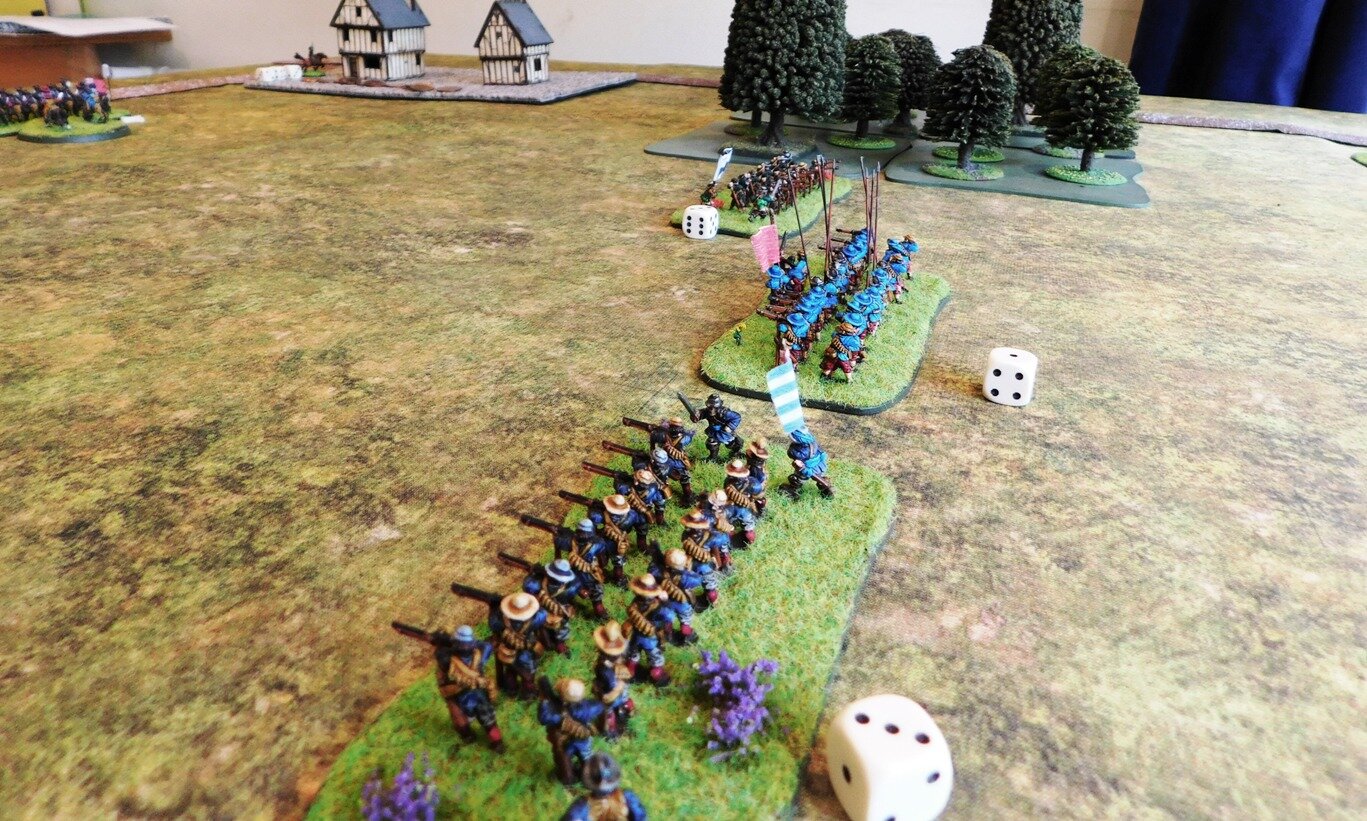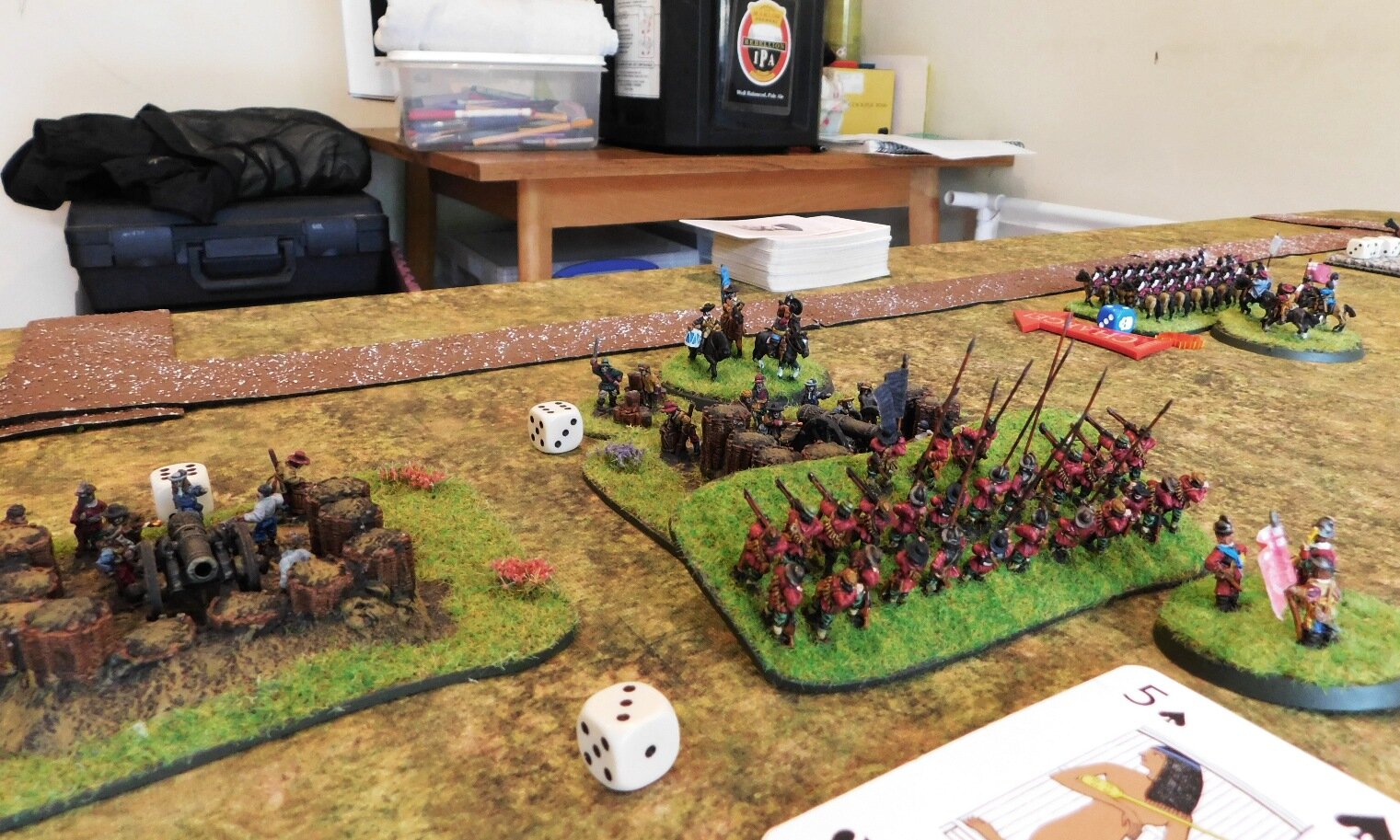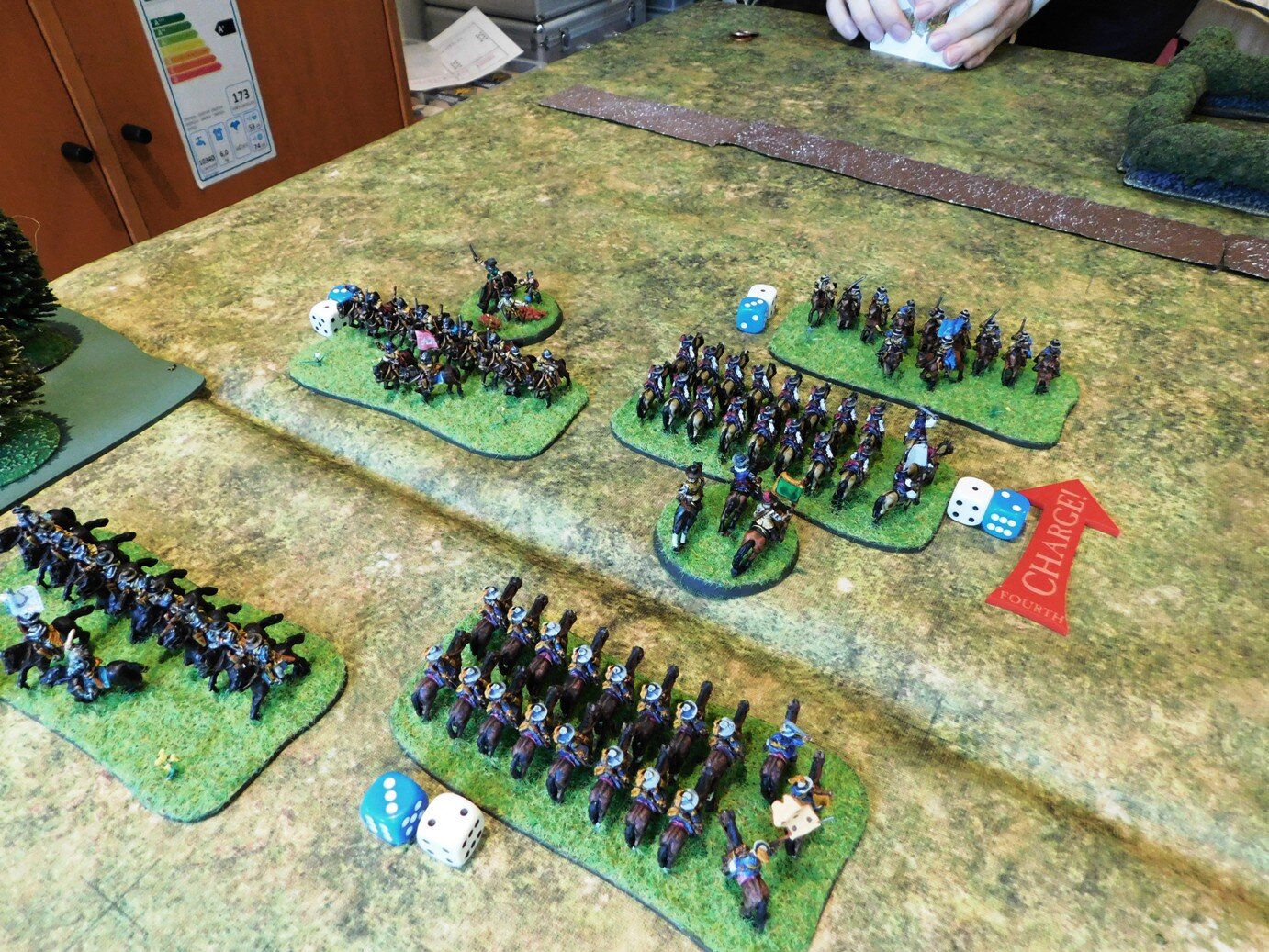With the varnish on the first two cohorts of blue-shield legionaries literally still drying, it was time to take the Marian Romans out for their first game of To The Strongest.
Looking at their list, the Romans have three basic options dependent on their commander: Caesar (Spain and Gaul); Pompeii (the East) and Sulla. My choice was to field a Caesarian army, mainly because I already have Gauls so wouldn’t need to paint any of them. My list was therefore as follows:
Proconsul
Legate
Legate
Allied Cavalry Leader
I’m thinking that perhaps the Gallic cavalry should, if veteran, more properly be Germanic cavalry, as the Gauls fighting for Caesar didn’t seem to be very good whereas the Germans were very effective, but that’s something I can rectify in due course: for this battle they were hyped up on Getafix’s potion!
Kavan, my opponent, chose to field a Syracusan army. Not strictly speaking contemporary, but very much the sort of army the Romans had faced in the years leading up to the Marian period. His force consisted of:
Commander-in-Chief
Commander
Commander
Commander
One unit of Syracusan Hoplites
One unit of Syracusan cavalry
One unit of light infantry
Initial Deployment
I deployed the Romans in a long line of Legionary bases, with the Gauls on the left wing.





